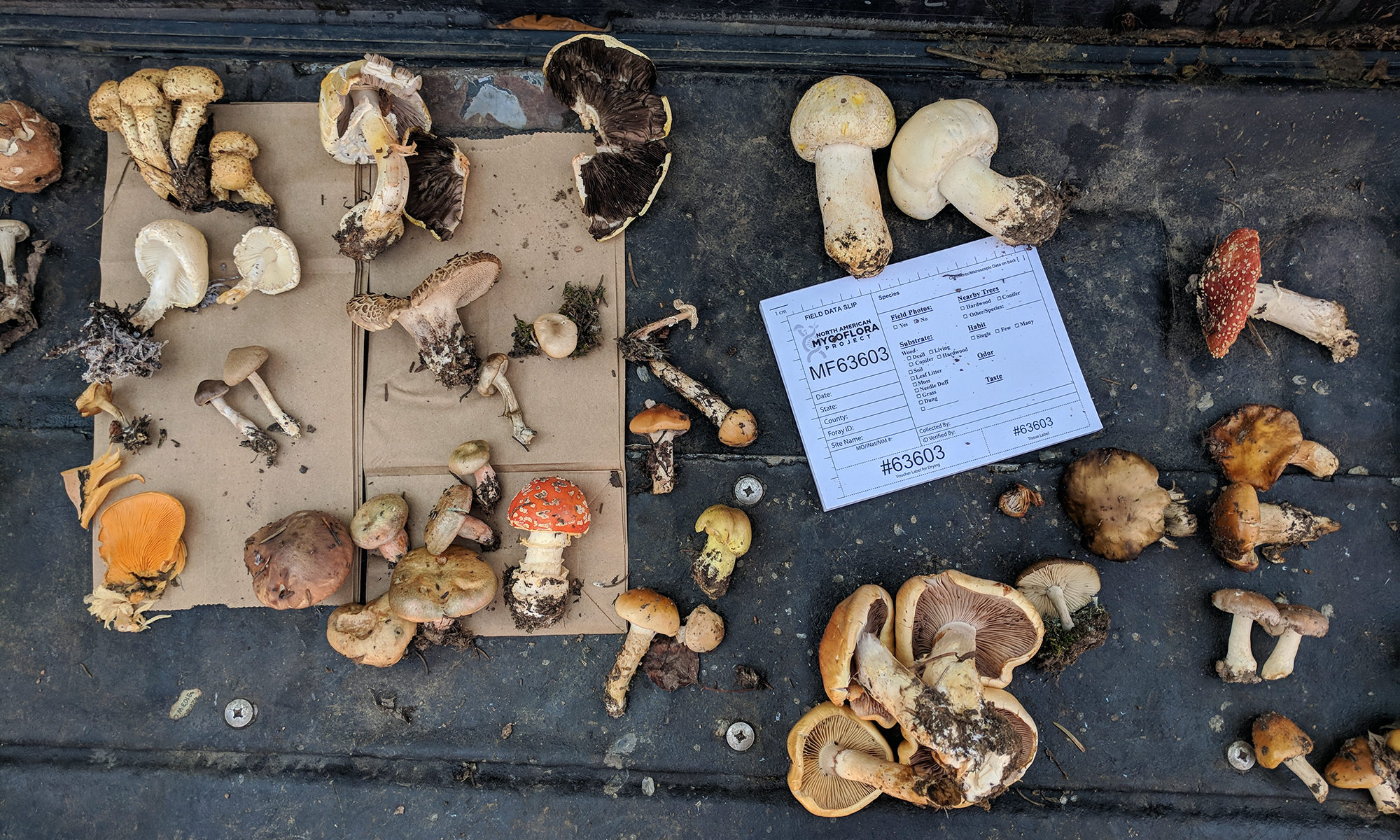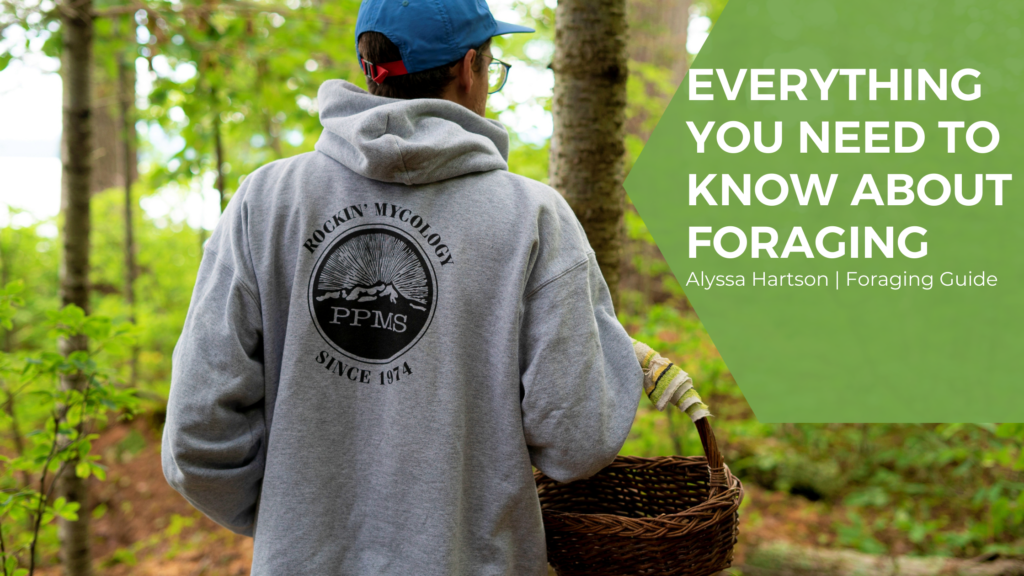Colorado is a unique and beautiful place to hunt mushrooms. From the plains and cottonwood riparian flatlands, up to alpine environments and snowbank fungi, we’ve got it all. With it, comes wildlife, poison ivy and thunderstorms that can catch you unprepared and unaware unless you take the right precautions to avoid them. Sometimes, however, even the most seasoned hunters get caught by surprise.
With foraging comes responsibility and knowing what to do if you run into danger is necessary for your safety. Being properly prepared should you encounter a dangerous situation can help you avoid a tragedy.
In this guide, we’ll talk about what to do if you encounter wildlife, outfitting yourself with the right gear and what to do if you get lost in the woods
Be Alert
First and foremost, pay attention to your surroundings at all times. Make note of landmarks in case you get
lost, bring a compass or download a map on your phone of the area beforehand that you can access offline
At some point, you’re likely to see wildlife. Be respectful and remember that you are invading their territory. If you do find yourself face to face with a wild creature, stay calm. Here are some tips:
Bears
Colorado is home to approximately 12,000 black bears. It is the only species of bear found in Colorado. “Black” actually refers to a species, not a color. Note that black bears can be brown, cinnamon or blonde. Seeing a bear from a safe distance is very exciting. Seeing a bear up close is not so exciting. Here’s what to do if you encounter a bear:
|
If you are attacked by a bear:
DO NOT PLAY DEAD. Try to escape to a secure place such as a car or building. If escape is not possible, try to fight back using any object available. Concentrate your kicks and blows on the bear’s face and muzzle. (https://www.nps.gov/subjects/bears/safety.htm) Of course, avoiding an encounter altogether is best. Always hike in groups and do not leave food lying around. Always gather your trash and take it with you. Pack it in….. Pack it out! |
What to do if you encounter a rattlesnake….
Colorado is home to 3 different species of rattlesnakes: the western rattlesnake, the prairie rattlesnake and the massasauga rattlesnake. They can be found anywhere below 8500’ between March and October.
It’s usually easy to identify rattlesnakes as they have a few very distinguishable features. The most obvious feature is the rattle on their tail. It’s important to note, however, that there are rattlesnakes that do not have a rattle. Other telltale features of rattlesnakes include:
- A diamond or triangle shaped head
- Their pupils are vertical and elliptical
- 2 visible fangs (used to deliver venom)
- Pits between their eyes and nostrils
Taking a few extra precautions and being aware of your surroundings is of utmost importance when in rattlesnake country.
Avoid encounters completely:
|
If you do see a rattlesnake:
|
If you are bitten by a rattlesnake:
- Call 911. If this isn’t possible, send someone in your group to find help. Getting help within 30 minutes of when you were bitten is imperative
- Do not attempt to suck out the venom. Bacteria in your mouth can cause infection.
- Do not use a tourniquet
- Do not raise the wound above your heart. This actually allows the venom to reach your heart more quickly.
- Do not wash the bite. Venom from your skin may be needed to properly identify the anti-venom needed for treatment.
- Remove tight clothing before swelling occurs.
- Remain still to minimize your blood circulation until help arrives
- Allow the wound to bleed but don’t squeeze it in an attempt to release the venom
- Remain calm to keep your heart rate and blood pressure down
Visit healthline.com for more information.
Mountain Lions
Colorado is home to around 7000 mountain lions, though sightings are rare. Should you happen to run into one, the way you react could save your life. If you do find yourself face to face with one, the most important thing to remember, even if you forget everything else, is DO NOT RUN. Just like your kitty at home, all cats love to chase prey.
If You Run Into a Mountain Lion
- NEVER RUN. Seriously.
- Keep your distance and don’t turn your back.
- Don’t crouch down on the ground. This is seen as an aggressive move to the cat.
- Slowly and calmly leave the area.
- Be extra careful around a female with cubs.
- Fight back if attacked- your mushroom knife, backpack, rocks and sticks can all be used as weapons.
- Report Sightings of Mountain Lions. Call 303-441-3440.
Lightening
Getting caught in thunderstorms can be scary. According to wikipedia, approximately 240,000 people get struck by lightning every year. If you’re out and it starts lightning, it’s best to give up and go home.
But what should you do if you’re deep in the woods, miles from your car? First, figure out how close the lightning is by counting the seconds between when the lightning strikes until you hear thunder. Divide by 5. That number is approximately how close the lightning is in miles. If the answer is >30 seconds, seek shelter immediately. If you still have time to hike back to your car, keep 15 feet of space between you and everyone in your group.
Don’t use your cell phone, hold metal objects or climb trees. If you must shelter in place, find a cave or trail shelter, low lying area (beware of flash flooding). If you get stuck in an open area, crouch low, but only allow your feet to touch the ground, tuck your head into your arms, making yourself as small as possible. Members of your group should keep a distance of 50-100 feet from each other. When the storm has passed and you or any member of your group has been injured, seek help immediately.
Dehydration
Pack plenty of water. Becoming dehydrated can cause you all kinds of trouble that is easily avoidable. Symptoms of dehydration include:
- Dizziness
- Rapid heartbeat
- Rapid, shallow breathing
- Sudden sleepiness, lethargy, confusion and irritability.
- Fainting/collapse
Colorado’s high altitude, and it’s hot summer sun, are the perfect storm to cause dehydration for even the most experienced forager. Taking time to ensure you have plenty of water, and sipping slowly throughout the day, will play a big role in staying hydrated. You may consider carrying iodine tablets, chlorine drops or a special water filter in your pack, just in case you have to drink from a stream or lake.
What To Wear
Your choice of attire, especially in the Rocky Mountains, is important. The rule of thumb is to dress in layers.
- Long pants are a must
- Short sleeve shirt
- Long sleeve shirt, hoodie or jacket
- 100% cotton socks
- Sturdy hiking boots/shoes with ankle support (bonus if they are waterproof)
- Sunblock
Long pants can be uncomfortable in the heat, but they will protect your legs from bugs, thorns, sharp grass, twigs, snakes, cold and from sunburn. If you’re out past sunset, depending on the time of year, you’ll be extra glad you chose long pants, as it can get quite cold when the sun drops behind the mountains. Our weather can change in an instant, thanks to the Rockies, so being prepared for anything is smart.
What To Bring
You’ll need the right equipment to gather your forest finds. In addition to your first aid kit, water purification tabs and compass or offline map you’re going to want a way to easily forage while causing the least amount of damage to nature as possible.
- A good mushroom knife, which has a curved (sharp) blade and a little brush
- A basket or paper sack + lunch sized paper bags to keep different species separated
- Your trusty field guide, such as “Mushrooms of the Rocky Mountain Region” by Vera Stucky Evenson
- Drinking water
- Snacks
- Trash bag to pick up any trash you find along the way
Know The Rules
It’s your responsibility to make yourself familiar with the rules and regulations in the areas that you plan to collect mushrooms. State parks, national parks and national forests all have different rules about gathering forest products. Some don’t require anything, while others require you to purchase a permit and others do not allow it at all. Speak to a park ranger, stop in to the local forest service or state parks and wildlife office if you’re unclear or unable to find the information you need.
It’s never okay to gather or forage on private property without the express permission of the property owner. If you get caught trespassing on private property, you could face up fines up to $100,000 and up to 3 years in jail. Crossing private property to get to public lands is also a no-no. Though it may be tempting at times, it’s in your best interest to keep out of private property.
Be Respectful
If we take care of our lands, our lands will take care of us. The Pikes Peak Mycological Society has a leave no trace policy. Be mindful of plants you may step on while out in the woods. If you see litter along the way, do the right thing and pick it up. Responsible hunters always leave the woods cleaner than they found it. If you take your pet along with you, follow the leash laws, pick up after them and be sure to pack water and snack for them also.
Conclusion
Mushroom hunting can be very fun and exciting, as well as a great learning opportunity for you and your family. Be mindful of your surroundings, making sure you’re adequately prepared and knowing what to do in case of an emergency is all you need to get out there and have a great time.
If you have tips or stories you’d like to share about mushroom hunting and safety in the woods, we’d love to hear them!


